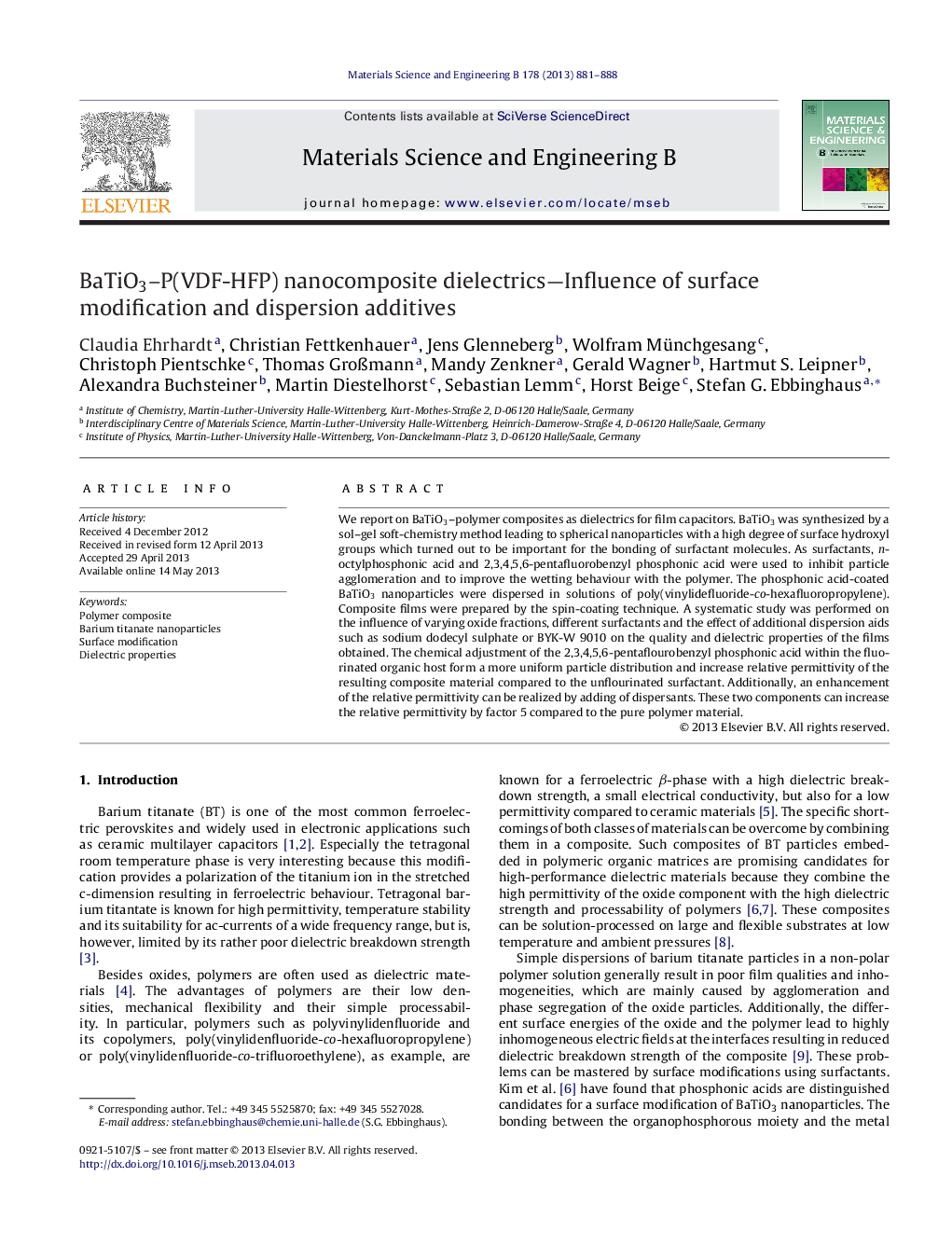| Article ID | Journal | Published Year | Pages | File Type |
|---|---|---|---|---|
| 1528981 | Materials Science and Engineering: B | 2013 | 8 Pages |
•Polymer composites were prepared using a sol–gel synthesized BaTiO3.•BaTiO3 surface hydroxyle groups act as linkers for surfactant molecules.•The effect of chemical adjustment between surfactant and polymer host is studied.•A positive effect of an additional dispersant was found.•Dielectric properties of the resulting composite films are presented.
We report on BaTiO3–polymer composites as dielectrics for film capacitors. BaTiO3 was synthesized by a sol–gel soft-chemistry method leading to spherical nanoparticles with a high degree of surface hydroxyl groups which turned out to be important for the bonding of surfactant molecules. As surfactants, n-octylphosphonic acid and 2,3,4,5,6-pentafluorobenzyl phosphonic acid were used to inhibit particle agglomeration and to improve the wetting behaviour with the polymer. The phosphonic acid-coated BaTiO3 nanoparticles were dispersed in solutions of poly(vinylidefluoride-co-hexafluoropropylene). Composite films were prepared by the spin-coating technique. A systematic study was performed on the influence of varying oxide fractions, different surfactants and the effect of additional dispersion aids such as sodium dodecyl sulphate or BYK-W 9010 on the quality and dielectric properties of the films obtained. The chemical adjustment of the 2,3,4,5,6-pentaflourobenzyl phosphonic acid within the fluorinated organic host form a more uniform particle distribution and increase relative permittivity of the resulting composite material compared to the unflourinated surfactant. Additionally, an enhancement of the relative permittivity can be realized by adding of dispersants. These two components can increase the relative permittivity by factor 5 compared to the pure polymer material.
